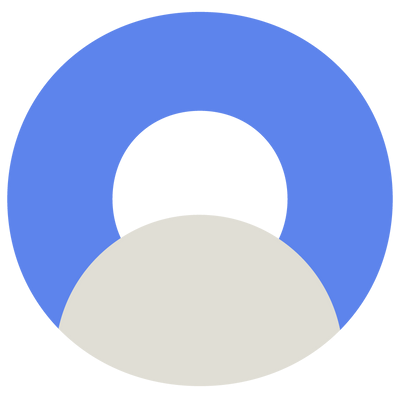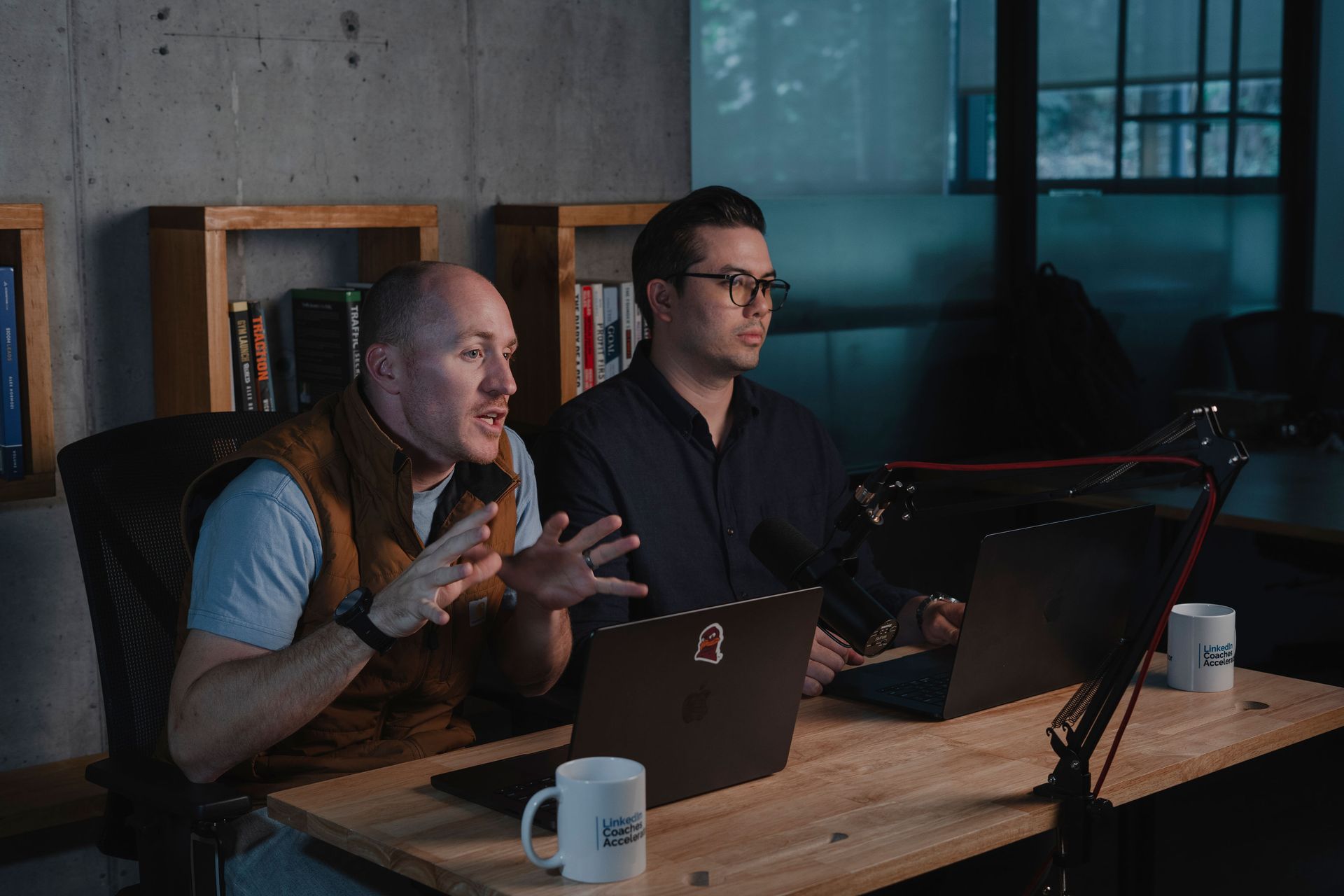How to Stand Out in a Competitive Job Market: Build a Personal Brand
TL;DR:
In today’s competitive job market, a résumé alone won’t cut it. A strong personal brand is key to standing out, attracting opportunities, and advancing your career.
Quick Hits:
- You’re more than a job title: define your story, value, and goals.
- Be visible online: Optimize LinkedIn, use a personal website, and stay active.
- Create content: Share real insights and lessons to build credibility.
- Track results: Use engagement metrics to refine your strategy.
- Keep improving: Your brand should grow with your career.
Nearly 70% of Broda Coaching placements in Q1 2025 came from LinkedIn engagement. Your next job might come from your personal brand and posts, not your applications.

Introduction
Let’s talk about something every job seeker needs but few actually invest time in, building a personal brand. In today’s digital-first world, it's not just a buzzword, it's a requirement. Whether you're job hunting or thinking about your next step, your personal brand is the story you tell before you ever get in the room.
Why Personal Branding Matters in Today’s Job Market
In today's fast-paced, digital-first environment, standing out in a competitive job market takes more than just a strong résumé.
Everyone has credentials. What sets top candidates apart is a strong personal brand. One that communicates not just what you’ve done, but who you are and where you're headed.
Here’s why personal branding matters more than ever:
- Cuts Through the Noise: In a crowded job market, a clear personal brand helps you rise above the sea of similar résumés and job titles.
- Tells a Bigger Story: It shows hiring managers more than just job history. It highlights your career journey, unique value proposition, and professional identity.
- Builds Trust Fast: A consistent, authentic brand creates instant clarity about your career aspirations, strengths, and the professional reputation you've built.
- Increases Online Visibility: A strong presence across digital platforms, especially LinkedIn, ensures you’re findable, relevant, and memorable in today’s market.
- Opens Career Opportunities: Recruiters and decision-makers are more likely to reach out when your professional branding aligns with the roles they need to fill.
Bottom line: In today’s job market, your personal brand is your first impression, often before you’ve even applied.
Understanding the Competitive Job Market
The job market today looks very different than it did five years ago. Economic uncertainty, tech disruption, and industry-wide restructuring have redefined what career success looks like, and what it takes to achieve it.
For job seekers, it’s not enough to react to change. You have to anticipate it.
Here’s what that means in practice:
1. Stay Informed on Industry Trends
To compete, you need to stay up-to-date on what’s happening in your space.
- Follow thought leaders and credible news sources in your field.
- Subscribe to industry newsletters, join online communities, and attend networking events.
- Watch how hiring patterns, in-demand skills, and tech tools shift across sectors like tech, finance, healthcare, and aerospace.


2. Know What Employers Actually Want
Understanding the job market means knowing what hiring managers are really screening for.
- Technical expertise is table stakes.
- Employers want candidates who can show measured impact, adapt to change, and solve emerging problems.
- Having a strong personal brand that aligns with these needs can move your name to the top of the list.
3. Evaluate Your Own Industry’s Direction
Ask:
- Is my field growing, shrinking, or transforming?
- What key skills will be most valuable in 6–12 months?
- Are the top roles in my space evolving (e.g., AI tools in marketing, remote-first operations in tech)?


4. Build for Long-Term Professional Development
Understanding the market isn't just about getting hired; it’s about preparing for sustainable career advancement.
- Identify areas where you can invest in professional development.
- Take online courses, earn certifications, or seek coaching to stay ahead.
- Prioritize continuous improvement so you’re ready, not reactive, when the market shifts.
- In today’s fast-paced job market, your success hinges on more than talent. It depends on how well you understand the game, and how quickly you adapt to play it.
Define Your Brand (It’s More Than a Job Title)
Here’s a truth most professionals overlook: Your personal brand is not your job title.
You’re not “just a Marketing Manager” or “just a Product Lead.” That’s a label that recruiters see on paper. Your personal brand is what they remember after reading it.
It’s the tone in your LinkedIn post. It's how you show up in video content on LinkedIn. It’s the story you tell in a networking conversation. It’s the way others describe you in a referral or recommendation. Your brand is your compelling statement about what makes you valuable, especially in a competitive job market.
Why This Matters in Today’s Job Market:
- Hiring managers don’t hire job titles; they hire people who solve problems.
- A well-defined personal brand makes it easier to communicate your unique value proposition.
- It helps you stand out in job interviews, networking events, and on digital platforms like LinkedIn.
Start With Real Self-Assessment
To define your brand, start with three critical questions:
- What problems do you solve regularly in your work?
- What key metrics or results have you directly influenced?
- What do colleagues, clients, or mentors consistently thank you for?
Then Go Deeper:
- What are your unique skills?
- What are your core values?
- Where do your career goals intersect with market needs?
- Who is your target audience? Recruiters, hiring managers, industry leaders?
Craft Your Brand Statement
Once you’ve reflected on the questions above, distill your findings into a 1–2 sentence professional branding statement. This should clearly communicate your:
- Area of expertise
- Key impact or value
- Target audience or mission
Example:
“I help tech companies increase user adoption by turning complex systems into intuitive experiences backed by data and user research.”
Apply It Everywhere:
- Use it in the headline and about section of your LinkedIn profile.
- Make it the lead in your cover letters, résumé summary, and networking emails.
- Use consistent language across your personal website, social media platforms, and any content creation efforts.
A strong personal brand gives people a reason to remember you and a reason to reach out.

Building Your Online Presence: Beyond a Résumé Dump
Let’s be blunt, if your LinkedIn profile still reads like a résumé dump, it’s costing you opportunities.
In today’s job market, a strong online presence is your digital handshake. It’s how you tell your story, show your value, and get noticed by potential employers.
Why Your Online Brand Matters:
- First impressions happen online. Hiring managers will Google you before they email you.
- Static profiles get buried. LinkedIn’s algorithm rewards content, engagement, and activity.
- Career advancement requires visibility, not just applications.
Where to Focus:
1. Optimize Your LinkedIn Profile
Your LinkedIn profile is your go-to platform for visibility. Make every section count:
- Use a professional headshot (no selfies).
- Showcase measured impact in your experience section, not just tasks, but results.
- Write a compelling summary that includes your value proposition and key achievements.
- Add keywords relevant to your role, industry, and target roles to show up in recruiter searches.
2. Post, Comment, Share
Being visible means being active.
- Share valuable content and insights tied to your work or industry trends.
- Comment on others’ posts to build genuine connections. Don't post only AI-generated comments!
- Use content creation to talk about professional development, challenges you’ve overcome, or lessons from your career journey.
3. Build a Professional Portfolio or Website
- Include case studies, certifications, and success stories that back your brand.
- Make it easy for hiring managers to understand your work through clean design and keywords relevant to your industry.
Real-Life Example
When I landed a role at Amazon in 2020, it wasn’t because I had the most polished résumé.
It was because I:
- Sparked conversations in the comments, not just in the DMs.
- Posted regularly about career growth and my professional story.
- Re-engaged with former leaders through meaningful conversations.
The visibility and trust built from LinkedIn activity led to real conversations, which led to an interview and then the offer.
Bottom line: Your
online profiles are not just for show; they're an extension of your
personal brand. If you want to
stand out in a competitive job market, show up, speak up, and stay consistent.

Content Creation: The Engine of Thought Leadership
If you want to be recognized as a thought leader in your industry, start by sharing your professional story in a way that educates, engages, and sparks interest.
Too many professionals play it safe, reposting generic tips and motivational quotes. That’s not content creation, that’s noise. To build a compelling personal brand, your content needs to reflect your expertise and voice while offering valuable insights to your target audience.
Why Content Creation Matters:
- Builds consistent visibility in a digital-first world.
- Establishes your authority and credibility in your field.
- Fosters genuine connections with industry professionals and peers.
- Drives inbound opportunities from recruiters, collaborators, and potential employers.
What to Share:
Skip the fluff. Share content that’s authentic, practical, and specific:
- Success stories and lessons from real projects.
- Insights on industry trends, tools, or frameworks.
- Challenges you’ve overcome in your career journey.
- Key metrics you’ve influenced or results you’ve driven.
- Takeaways from industry events, webinars, or coaching sessions.
Formats That Work:
You don’t have to be a blogger or influencer to build visibility. Keep it simple:
- Commenting thoughtfully on trending posts in your niche.
- Articles or carousels that break down a key skill or framework.
- Short LinkedIn posts (200–400 words) with personal takeaways.
One-sentence
compelling statements paired with a visual or chart.


Real-World Impact
In Q1 2025, nearly 70% of Broda Coaching’s placements came from LinkedIn engagement. Not job boards. Not cold emails.
That means:
- Comments that sparked conversations.
- Posts that positioned job seekers as leaders.
- Articles that attracted interest from hiring managers and recruiters.
Actionable Steps:
- Pick 1–2 topics you care about and know well.
- Commit to posting once a week (start with LinkedIn).
- Share a quick insight, a mistake you learned from, or a tool you love.
- Engage with others. Don’t just post and ghost or rely on AI to write your comments.
Remember, you’re not writing for everyone. You’re writing for the 3–5 people who need what you know. And in today’s
competitive job market, those are the people who can change your career trajectory.
Measuring and Improving Your Personal Brand
Your personal brand is only as strong as its impact, and impact can be measured. In the current market, visibility and engagement are key signals that your branding strategy is working.
If you're not tracking results, you're flying blind.
Why Measuring Matters:
- Pinpoints gaps in your strategy for improvement.
- Supports data-driven strategies to boost visibility and credibility.
- Identifies which content is driving the most meaningful engagement.
- Helps you understand what content resonates with your target audience.
What to Measure:
Start simple, and scale as needed. Use built-in tools on LinkedIn, your personal website, or portfolio.
Here are key metrics to watch:
- Profile views and connection requests.
- Post performance (likes, comments, shares).
- Website traffic and time spent on key pages.
- Mentions, tags, or endorsements from industry professionals.
- Inbound messages from potential employers, recruiters, or industry peers.
Tools You Can Use:
- LinkedIn Analytics: See what posts are performing and who’s viewing your profile.
- Manual tracking: Use a spreadsheet to log profile visits, DMs, or outreach efforts weekly.
- Google Analytics: Monitor traffic and user behavior on your professional website or blog.
- Social media platform insights: Track reach, engagement, and follower growth with tools like Sprout Social and Hootsuite.
How to Use the Data:
Once you’ve got the numbers, take action.
- Test different headlines, visuals, or formats.
- Drop or adjust content that isn’t driving engagement.
- Double down on content types or topics that perform well.
- Update your LinkedIn profile or portfolio to reflect high-impact work or evolving career goals.
A Mindset Shift: Continuous Improvement
Your personal brand isn’t set in stone, it should evolve as your career grows. In the current market, staying relevant means staying proactive.
As you gain new experiences and expand your skill set, your personal brand should reflect that. Whether you're pivoting careers, earning a certification, or taking on leadership roles, update your brand to match your professional context.
Why It Matters:
- Helps you adapt to industry trends and market shifts.
- Supports long-term career success and professional growth.
- Keeps your brand aligned with new key achievements and roles.
Simple Habits to Maintain Your Brand:
- Monthly check-ins: Review your LinkedIn profile, website, and portfolio for clarity and relevance.
- Request feedback: Ask mentors or industry professionals if your brand reflects your current goals.
- Test small changes: Update your compelling summary, post style, or profile visuals to improve engagement.
Refining your brand regularly ensures it reflects your current professional identity and helps you stay competitive.

Career Growth is a Lifelong Game
Whether you’re gunning for that Director role or exploring a pivot, your professional growth depends on your brand. Attend industry events, connect with industry leaders, and create valuable content.
Be curious. Stay open. Keep learning. Because your professional identity isn’t static, and neither are you.
Final Thoughts
If you’re serious about standing out in a competitive job market, your personal branding matters more than ever.
- Develop a consistent voice across platforms.
- Share content that positions you as a thought leader.
- Connect with others not for likes, but for genuine connections.
Your next opportunity may not be publicly advertised. It might come from a comment you left, a story you told, or the strong personal brand you built.
Stay consistent. Stay real. You’ve got this.
Interested in getting help with your job search? Learn more about my
personalized coaching program.

Sources:
LinkedIn Workforce Report, May 2024
Harvard Business Review, "The Science of Personal Branding", February 2024
Broda Coaching Internal Placement Data, Q1 2025






